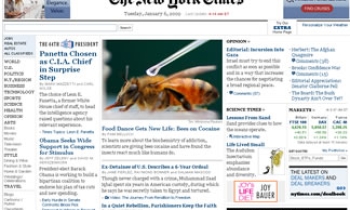NEW YORK (AdAge.com) -- "Engagement" has begun to resemble a Holy Grail of magazine metrics -- neither fully understood nor precisely located, but the object of countless quests. A new study on engagement, one among many efforts to demystify the subject, delivers a blow to true believers.
Performance findings
The study suggests that ads in high-engagement magazines perform no better than ads in magazines whose readers pay a lot less attention. That contradicts not just conventional wisdom but the hopes of publishers whose books really grip their readers.
Publishers and media buyers said engagement is more complex than the study acknowledges, but its authors said magazines should welcome the implications.
"When the buzzword of engagement became so big, starting about two years ago, we said, 'Let's really look into this,"' said Philip W. Sawyer, senior VP, Starch Communications Research, which conducted the study -- and which, it should be noted, offers creative-testing services for print ads. "If a magazine wasn't tabbed as a high-engagement publication, it was being discriminated against. Starch has said all along that it's a creative issue. That was our hypothesis."
So Starch divided 25 magazines into high-engagement, low-engagement and middling camps, defining engagement by the frequency with which they are read, time spent with each issue and how much of each issue gets finished. When it examined the percentages of readers who remembered ads across the magazines, it found no link between those scores and levels of engagement.
Some question conclusions
One would expect some kind of connection, Mr. Sawyer acknowledged. "It makes sense," he said. "You get somebody who is really passionate about the magazine -- isn't it just logical that he's going to look more at the ads? Even as logical as this may be, it's just simply not borne out by the data."
But some called the Starch conclusion way off. "That's like saying there's no definitive evidence that smoking causes cancer," said Stephen Giannetti, VP-group publisher, National Geographic, a title with nearly compulsive readers. "If somebody is engaged in our magazine and spends more time in our magazine, there's no way they're not going to be more engaged in the advertising."
Brenda White, VP-director of print investment, Starcom Worldwide, said more research is always good, but creative execution is only one factor alongside elements such as relevancy and magazine characteristics. "It's not clear-cut," she said. "We have seen success with an engagement-based print planning approach, based on our definition of engagement."
Other factors
Readers themselves also need to be better understood, said Eric Blankfein, senior VP-director of communication channel planning, Horizon Media, citing lingering questions over counting total audiences and the differences between paying readers and non-paying ones. "It's the audience and the content," he said. "One by itself really won't cut it."
Previous studies have suggested that creative execution may matter most-but not always. Research by Meredith Corp., FCB and Knowledge Networks presented last year, for example, concluded that creative matters most for categories like consumer package goods, somewhat less for apparel and much less so for pharmaceuticals, whose ads are regulated by the government. In that context, pharmaceutical ads do benefit from appearing in titles with highly involved readers.
But never fear, engagement fans, plenty of research remains to come. One big project under way, called MI4 (for Measurement Initiative: Advertisers, Agencies, Media and Researchers), is being conducted by the Association of National Advertisers, the American Association of Advertising Agencies and the Advertising Research Foundation. MI4 announced initial findings last fall and is now working on validating engagement as a metric in planning, tracking and calculating returns on media investment.









